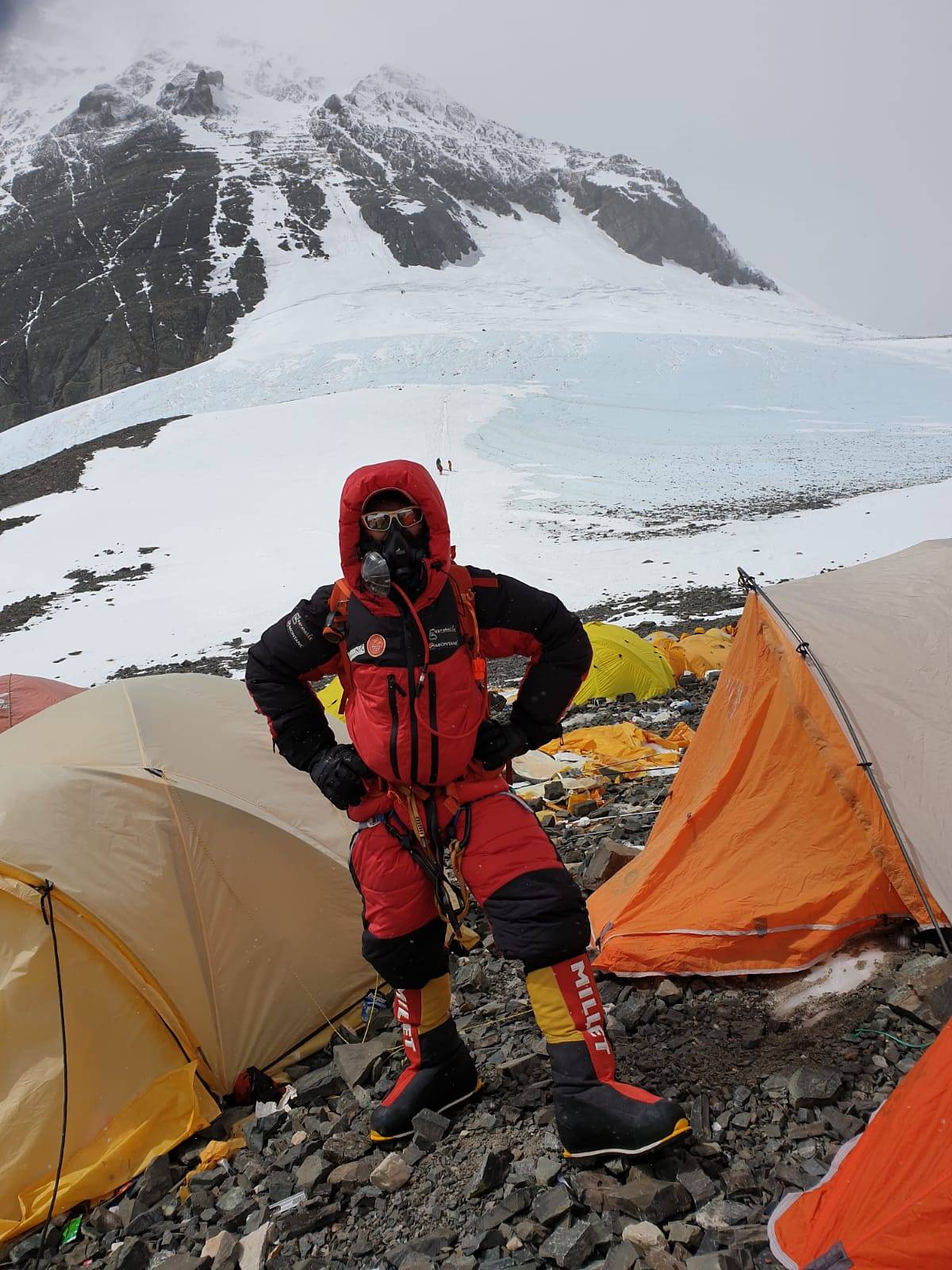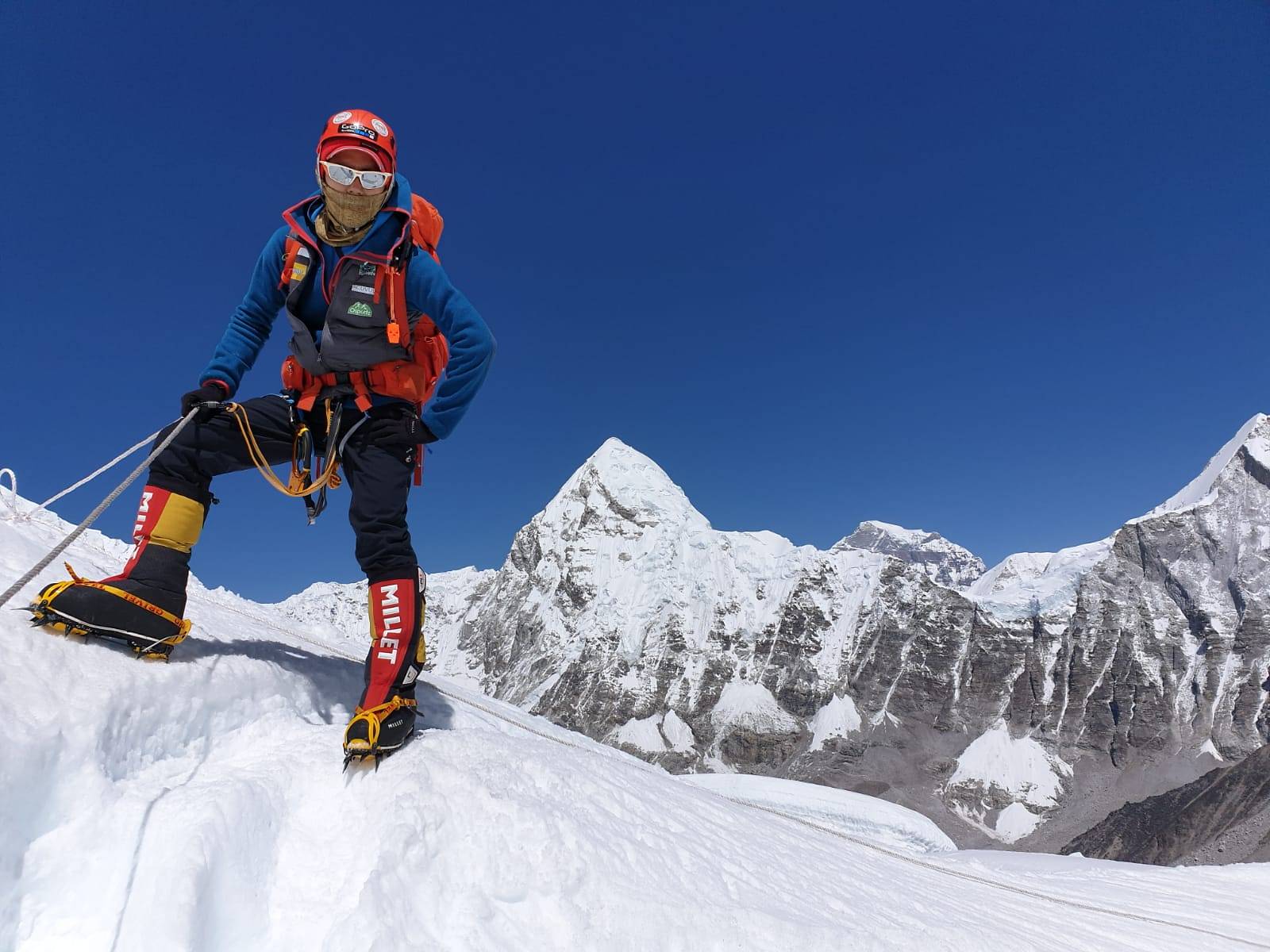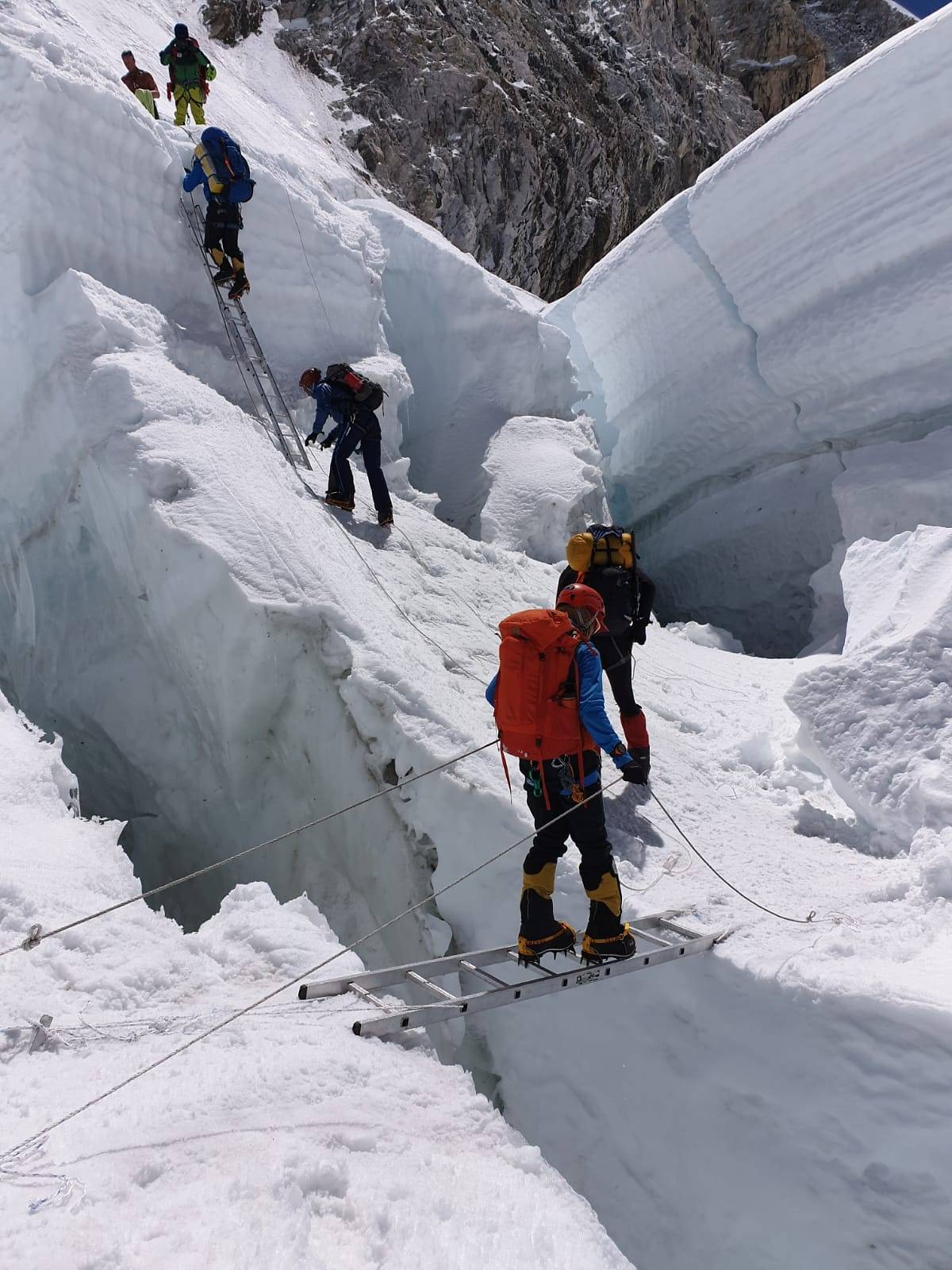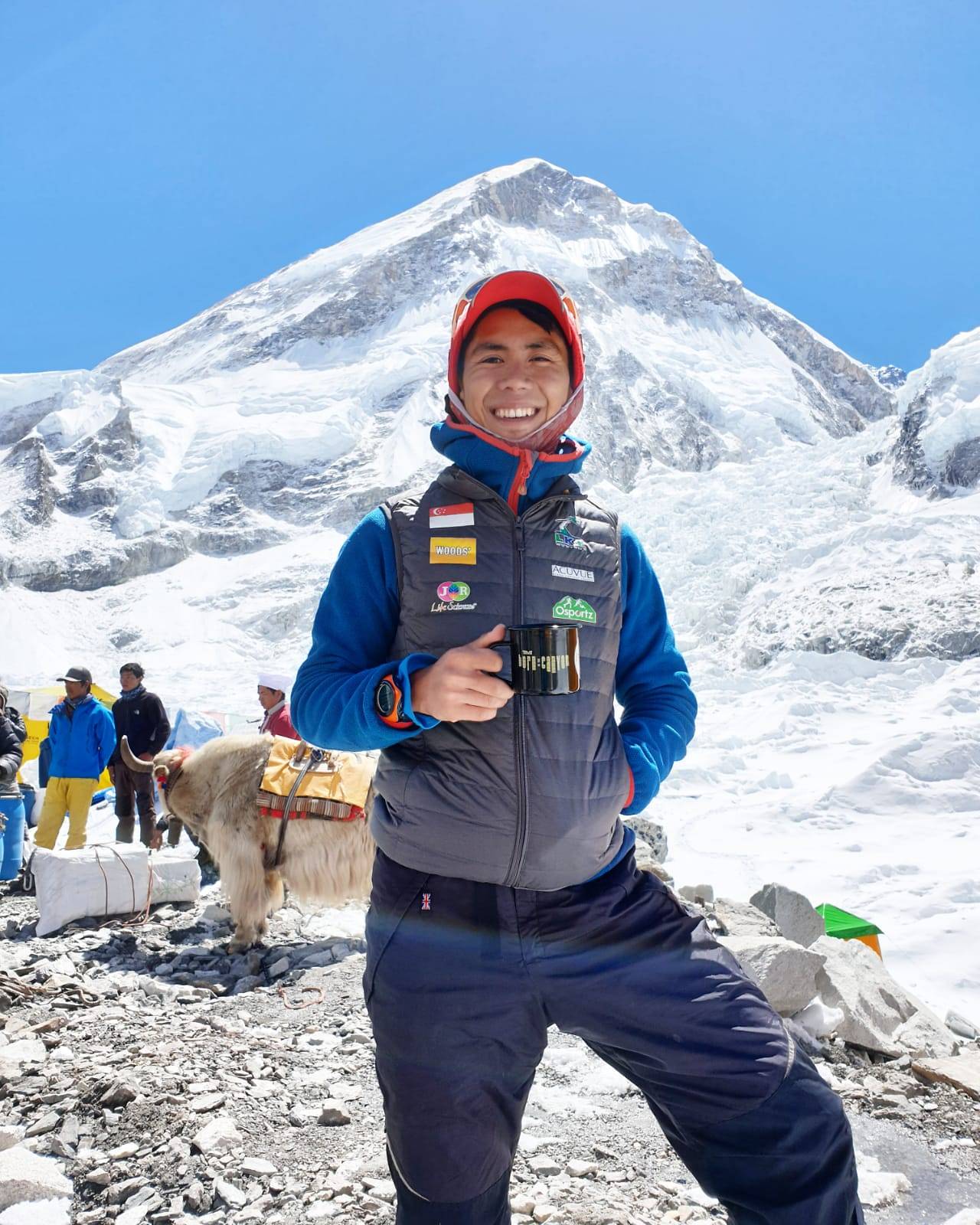SINGAPORE: As the sun rose above the horizon and illuminated a narrow, exposed ridge jutting 8,000m into the sky, Jeremy Tong finally understood just how many climbers were trying to conquer the tallest mountain in the world.
The 29-year-old saw that he was just one of hundreds with the same goal that morning of May 22, shifting and struggling in a long line all the way to the summit. “I was like wow, that is a lot of people,” he told CNA on Sunday via video call from Kathmandu.
Tong had just passed the south summit (8,690m) en route to the Hillary Step, the final stretch before the summit of Mount Everest (8,850m). But the human traffic jam did not ease up.
Nepal had issued a record 381 permits for this year’s spring climbing season, meaning more than 750 climbers – including Nepali guides – were expected to tread the same path to the summit.
And as poor weather narrowed the climbing window and triggered bottlenecks, at least eight have died on Everest this season alone, surpassing the total for 2018. Hiking officials have attributed most of the deaths to weakness, exhaustion and delays on the crowded route.
The congestion leaves climbers exposed longer to the dangerous wind, cold and lack of oxygen at the highest natural point in the world.
On the way up, Tong battled 35kmh winds and minus 40-degree Celsius temperatures, fully aware that every second spent waiting could spell the difference between life and death – especially as frostbite and hypothermia set in.
“Your fingers start to freeze, your toes start to become cold,” he said. “And you need to clip and unclip yourself to a safety rope, but you’re fumbling because you have mittens on. It is a very dangerous situation over there.”

This May 22 photo taken by climber Nirmal Purja’s Project Possible expedition shows the human traffic jam on Everest. (Photo: Facebook/Nirmal Purja MBE: “Project Possible – 14/7”)
Tong ended up spending more than an hour just letting other climbers through on the single rope-path barely wide enough for two people to stand side by side.
“I just flattened myself to the side of the rope so people coming down could pass me,” he added. “One misstep on the left side, you’re plunging 2,000m into camp 2. On the right side, you’re plunging 2,000m into China.”
THE SUMMIT
But with his trusted Sherpa guide Pemba, Tong kept “charging forward” through the Hillary Step, past the point where he was forced to turn back during his virgin summit attempt in 2017.
Back then, Tong only had about 200m to go when he was hit with hypothermia. This time, he didn’t look back. “I was like well, this is it,” he remembered thinking. “It was the feeling of overcoming that point of failure.”

Tong at camp 4 before the summit push, in the “death zone” almost 8,000m high. (Photo: Jeremy Tong)
Standing on a ridge, Tong caught his first glimpse of the summit, decorated with colourful prayer flags fluttering in the wind.
“I was looking at it and I thought, well that is really the top of the world,” he said. “Since I was a young boy, I would be thinking about that top. But I didn’t imagine it would look like that.”
Tong summited Everest at 6.14am, almost 12 hours after leaving base camp (5,364m) at 7.30pm the evening before.
His “game plan” on the summit was to pose for three photos with three different banners: One of his sponsors, one of the adventure company he runs, and one dedicated to his wife.
But within minutes of taking off his oxygen mask and balaclava, Tong’s ears had gotten frostbite from the frigid winds slicing through the air. It was getting too windy, his guide said, and they needed to go down.
“In the end, the game plan totally failed,” he said with a laugh, adding that he only managed the first photo. “I only had 10 minutes on the summit.”
Regardless, Tong said his achievement had vanquished the “black shadow” that hung over him and only grown bigger since his failed attempt two years ago. On many occasions he would wake up thinking he had scaled Everest, only to realise it was just a dream.
“But this time round, it’s different,” he said. “Now when I wake up, I realise I have climbed Mount Everest.”
THE DESCENT
However, getting to the summit was only half the job done. On the way down, Tong had to deal with the traffic jam again, this time spending even longer stuck on the steep and slippery slopes.
Tong said the most dangerous part of mountain climbing is the descent, when people lose focus after the euphoria wears off and fatigue kicks in. The most recent death this season was reportedly due to weakness, after the climber suddenly fainted while going down.
“People just give up on life because it is a really different world out there,” he said, pointing to the “death zone” more than 8,000m high where oxygen levels are extremely low. “Without oxygen, you cannot survive for five minutes.”

Tong making his way to camp 2 (6,400m). (Photo: Jeremy Tong)
As Tong has been climbing mountains for 15 years, he could deal with the challenges better. Even then, he had some problems of his own. Icy winds and plummeting temperatures had blurred his vision and frozen his oxygen mouthpiece, meaning he could barely see and breathe on the way down.
“It was really steep and really scary,” Tong recalled, admitting he was mentally tired. “I was starting to get a bit fearful for my life, and I thought that the best way was to try and get down as quickly as possible, and just remain calm.”
Tong kept his focus and had to squint to ensure he didn’t miss a step. He relayed his troubles to his guide, who told him to go slow and not to worry. While Tong eventually regained full use of his vision, others were not as lucky. He saw Sherpa guides attempting to drag a climber down the mountain as she lay sprawled in the snow.
READ: Three more deaths on overcrowded Everest
READ: ‘Traffic jam’ on Everest as two more climbers die reaching summit
Some climbers trying to scale Everest were clearly too inexperienced, Tong lamented. “This is not what I wanted to see,” he added. “It’s very saddening for the mountaineering community.”
THE FAMILY
Tong returned to base camp about 30 hours after initially setting out, and immediately grabbed his phone to call his wife. He knew she would be worried, especially as he had been unable to check in after his satellite phone went dead before the final push to the summit.
“She was very happy, very relieved,” he said. “She had just given birth a few months ago, and of course she would loved for me to be by her side, taking care of the baby and everything.”

Tong traversing from base camp to camp 1. (Photo: Jeremy Tong)
However, Tong said his wife – who is also a mountain climber – has always been “very supportive” since he made it his mission five years ago to climb Everest. She even cooked ikan bilis and peanuts in chilli for him to eat on the way up.
“Even before we got married, she has been the one pushing me up this pedestal,” he added.
Tong has spent almost two months in Nepal, so he misses his wife and three-month-old son. Once back, he and his extended family will go on a short vacation in Malaysia.

Tong posing for a photo at Everest base camp. (Photo: Jeremy Tong)
For now, Tong is spending some time recuperating in Kathmandu before going home at the end of the month. His face is still sunburnt and his ears still frostbitten, but he has already set his sights on conquering the seven summits in the next three to four years.
The seven summits refer to the tallest peaks on each of the seven continents: Everest, Kilimanjaro (Tanzania), Kosciuszko (Australia), Aconcagua (Argentina), Denali (Alaska), Elbrus (Russia) and Vinson (Antarctica). Tong has scaled the first three.
But first, he’s prepared a list of his wife’s home-cooked dishes he intends to “feast” on once he gets back: Laksa, Indian rojak, soy sauce chicken, chicken rice and dory fish wrapped in banana leaf.





